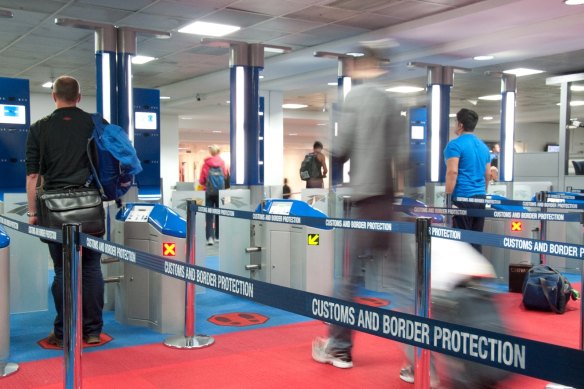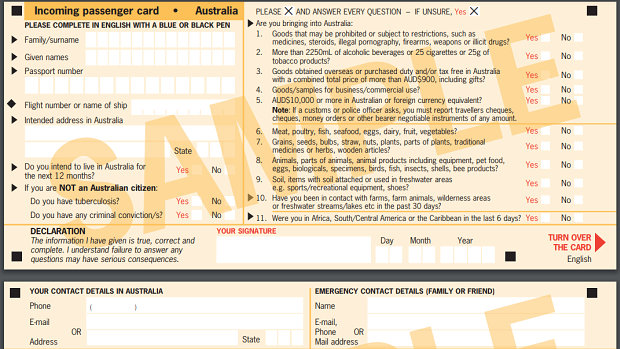Opinion
Passenger anger over new ‘improved’ SmartGates at Australian airports
Michael Gebicki
The TripologistOn July 5, I returned to Sydney at the end of an overseas trip, met by long queues at the automated kiosks where incoming passengers are checked against their e-passports. It was a royal shemozzle. There were only four kiosks operating in this area, and the shuffling queue of about a dozen people when I joined it stalled.
Two places in front of me, a traveller was having problems. He stood at the terminal for at least three minutes before finally departing without a ticket, heading for a much longer queue at the staffed immigration desks.

Traveller readers are not impressed with the new SmartGates at Sydney Airport.
By the time I inserted my passport into the SmartGate terminal, I’d been in the queue for over 15 minutes. It was the same situation returning home from another trip in April. Plenty of other travellers are reporting similar experiences.
It wasn’t like this before. Before the introduction of the latest Generation3 SmartGate technology, the process was much quicker. Slide your passport into the reader, answer a couple of questions, out pops a ticket, which you then insert into the facial recognition scanner at the gate. Bingo, the doors open and you’re released into the baggage collection area.
With the Gen3 SmartGates it’s still a two-step process, only more cumbersome. After the initial step at the SmartGate kiosk, the traveller answers a few questions and their image is captured. All being well, they receive a printed ticket – or not if they’re deemed ineligible. Ticket holders then proceed to the SmartGate for another photo session. If the identification is positive, it’s open sesame and the traveller passes through to the baggage collection area.
But some are asking: what’s the purpose of the second scan? The SmartGate has already compared the live image with the one in the passport using facial recognition technology, so why the need for another?
How could Border Force have created this mangled mess?
In response to a query from Traveller, a Border Force spokesperson wrote: “The SmartGate upgrade provides an improved experience for travellers entering Australia. The overall ‘cycle time’ for travellers through the kiosk and gate has been reduced.”
That doesn’t gel with the homecoming experience of many, including Traveller reader Julius Dhanu, who writes: “Coming home to Sydney after extended overseas travel, we were greeted with a chaotic airport immigration scene. There was a long, unstaffed queue for six immigration ticket machines, with one not working, and with foreigners mistakenly joining the line … Compare this to other countries and we look positively well below the standard.”
It’s a similar story in Melbourne, where reader Paul Higgins writes he witnessed “dozens of sleepy people totally bewildered by what to do”.
“What is needed are huge, obvious and multiple signs clearly showing, with diagrams, what to do,” he writes.
Plenty of other countries have creaking immigration processing, but we’re far from best practice. Compare this with entry to Singapore. Provided you’ve completed your SG Arrival Card within three days prior to arrival, you simply insert your passport in the automated border control system’s terminal, follow the instructions, and all being well, you’re through. Typical processing time is under a minute. Foreigners from 60 countries can now use these automated lanes at Changi Airport.
A change in the wind for the Incoming Passenger Card?
The Incoming Passenger Card asks questions about biosecurity, where you’re coming from, your passport number, address in Australia, occupation, phone number and several other matters that not too many non-totalitarian regimes think are important, or any of their business. These cards are handed out on the inbound aircraft, and they’re far from user-friendly for non-English speakers – or anyone without a pen.

Other countries have come up with better alternatives to Australia’s Incoming Passenger Card.
As Sandie Kleiman Peleg pointed out in a letter to Traveller. “It’s 2024, yet before we arrive in Australia we still receive those silly little customs forms to fill out on the plane. Surely it’s time that Australia opted for online forms like other countries.”
But this source of irritation might finally be on the way out. Last week Border Force announced a pilot program for an Australia Travel Declaration, a digital alternative to the paper Incoming Passenger Card. Starting with a trial program scheduled to begin late this year, eligible adult passengers on select Qantas flights from New Zealand will be invited to complete the digital declaration through the Qantas app.
When completed, passengers will receive a digital pass via the app and also to their nominated email, which includes a QR code that can be shown to Border Force officers on arrival. As well as offering a more streamlined experience for incoming air passengers, engaging passengers before they travel alerts them to the risks of importing banned goods. If the pilot program is a success, the Australia Travel Declaration will be made more widely available, and hopefully with a dedicated ADF app rather than relying on airlines’ apps.
New Zealand, with similar biosecurity concerns to Australia’s, requires all arriving passengers to complete a New Zealand Traveller Declaration. The country has had an electronic version of its declaration in play for the past year. Incoming passengers from many countries can go through an e-gate but this is a simple, one-step process. No changes have been flagged to Australia’s two-step SmartGate system.
Sign up for the Traveller newsletter
The latest travel news, tips and inspiration delivered to your inbox. Sign up now.